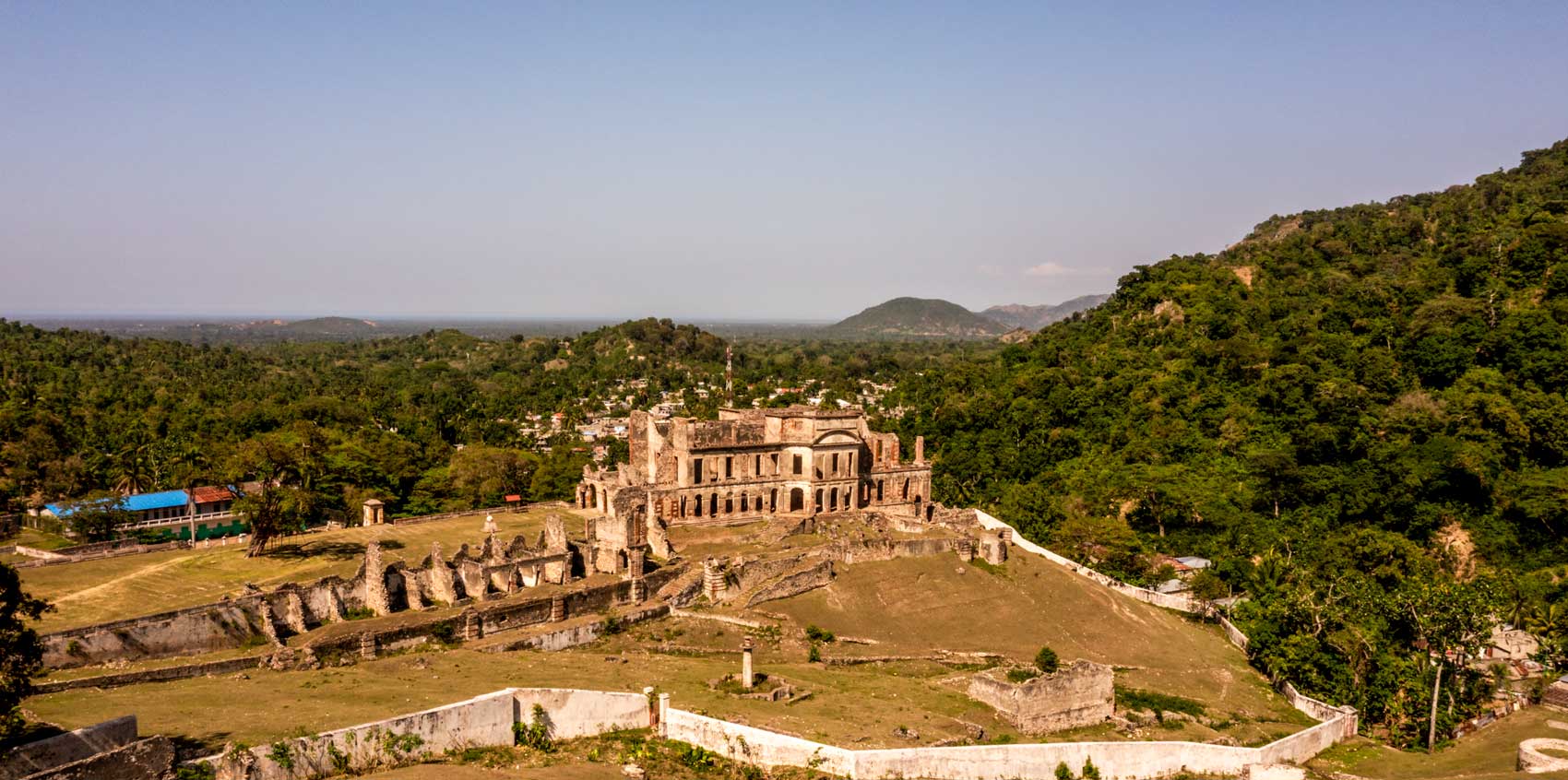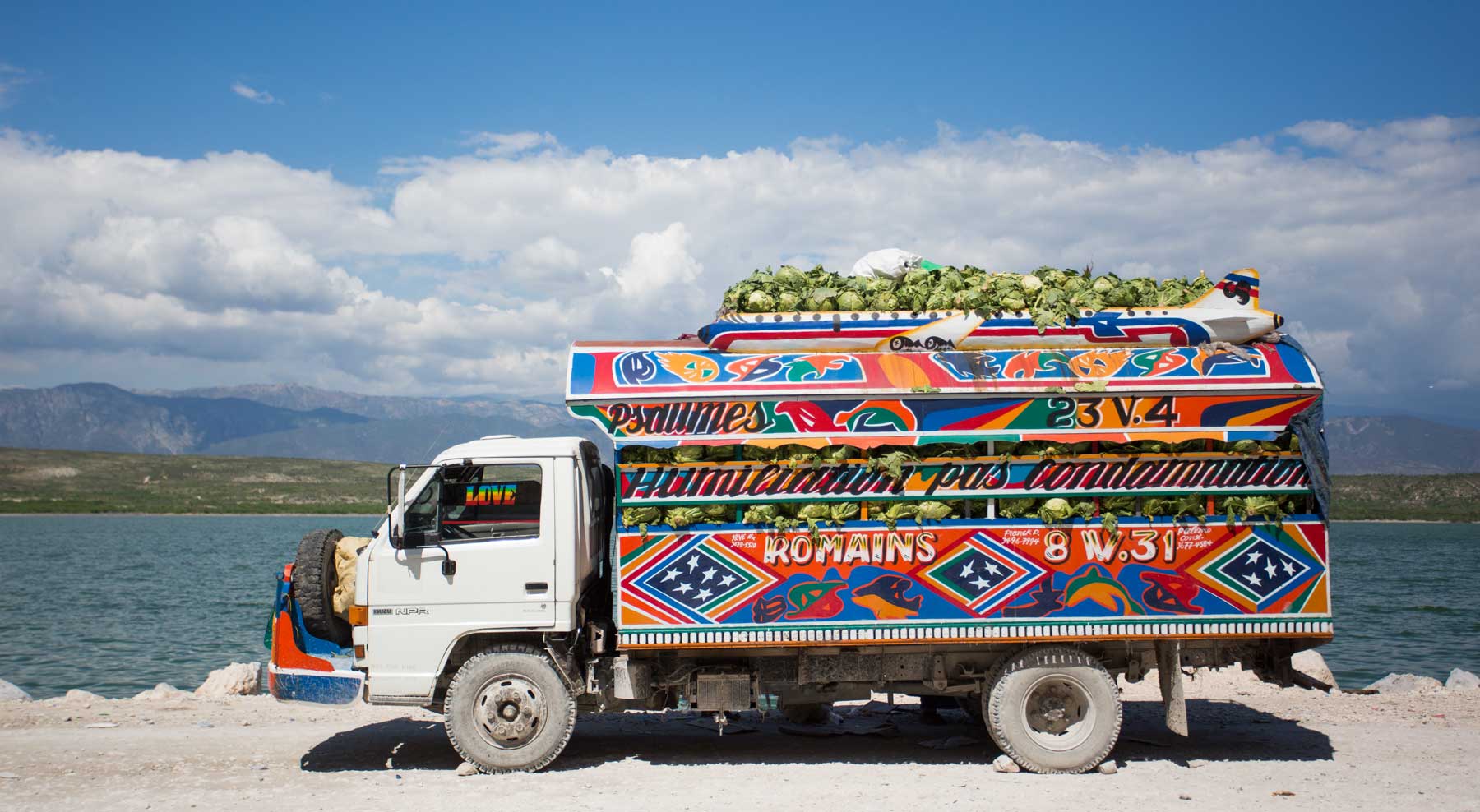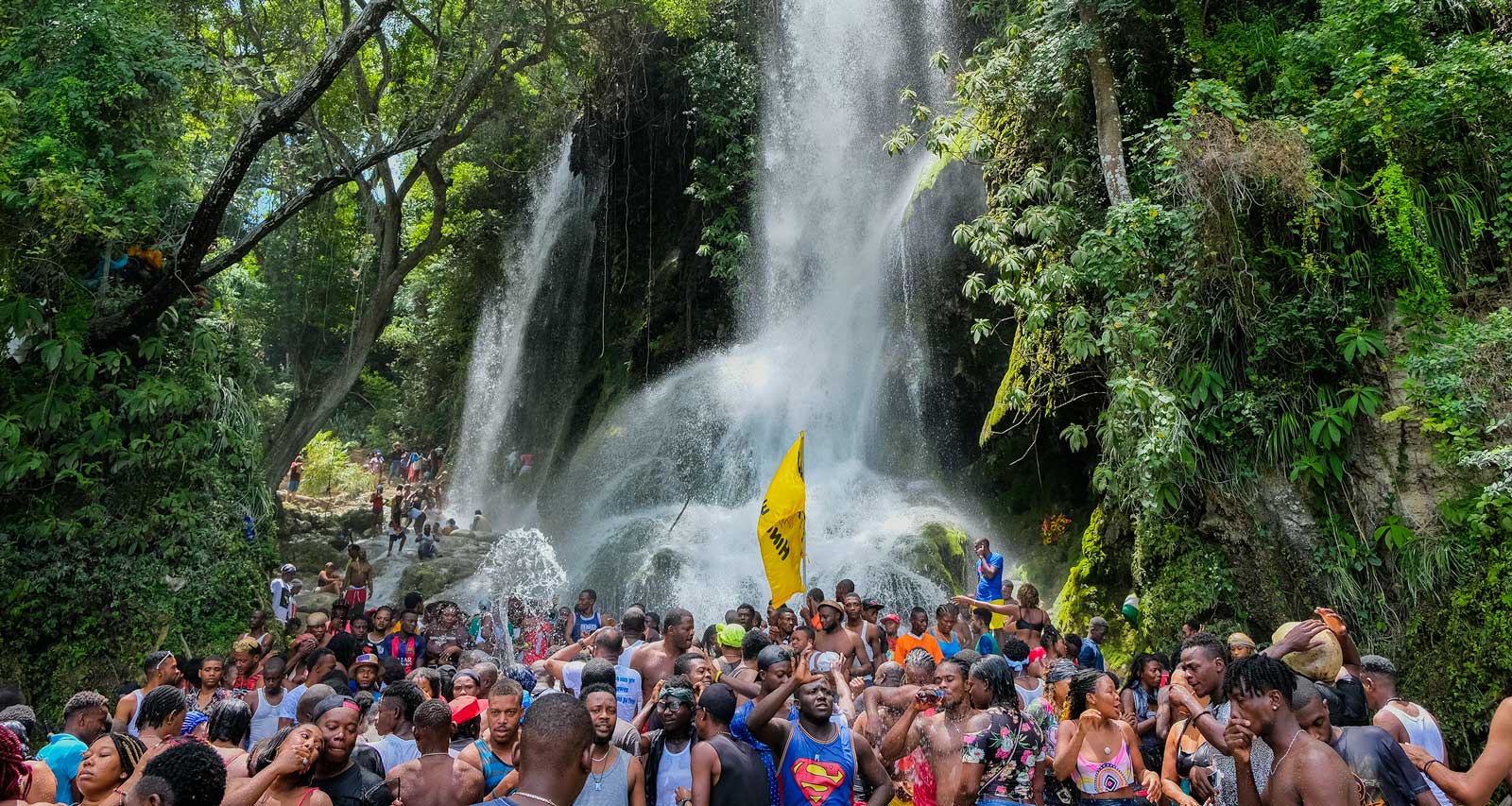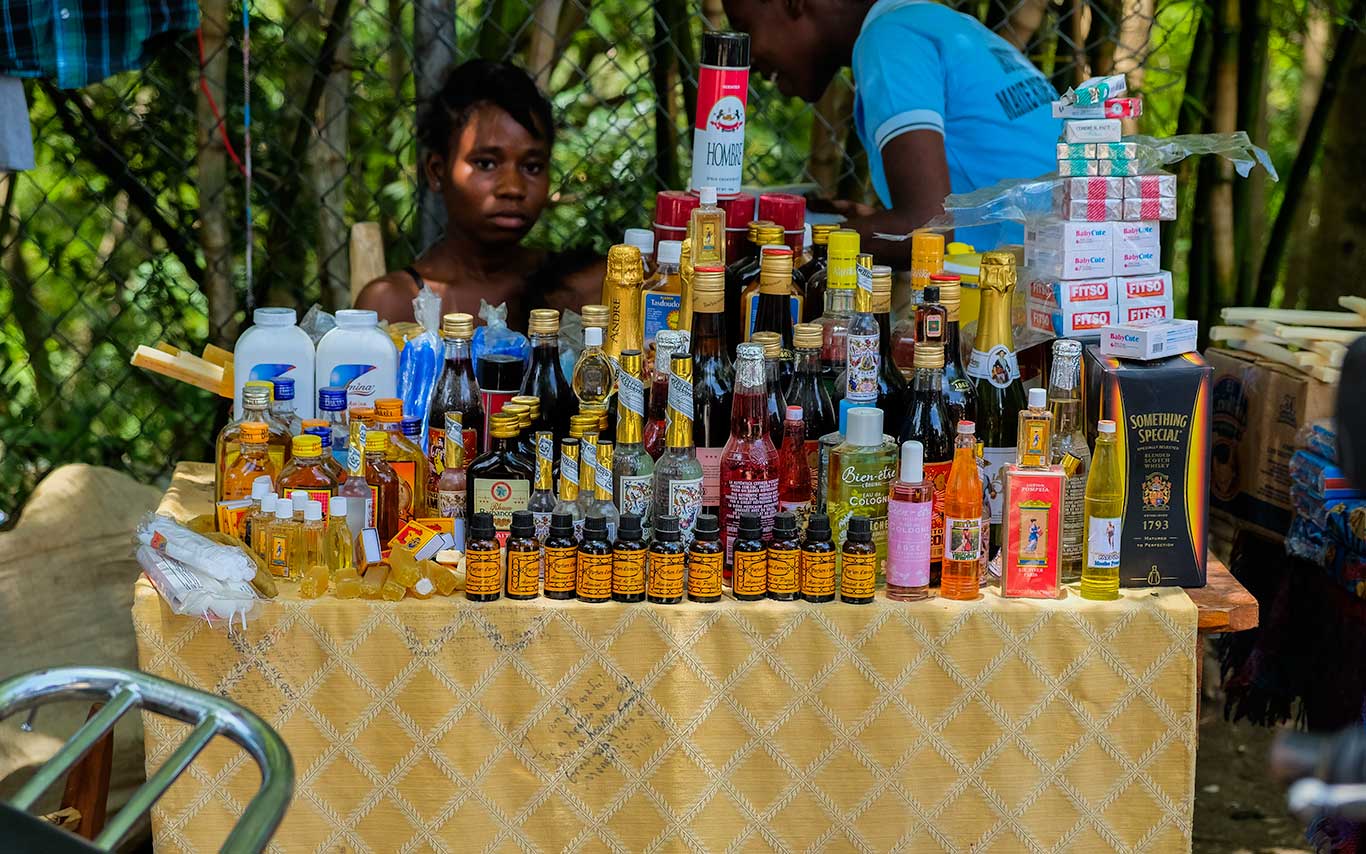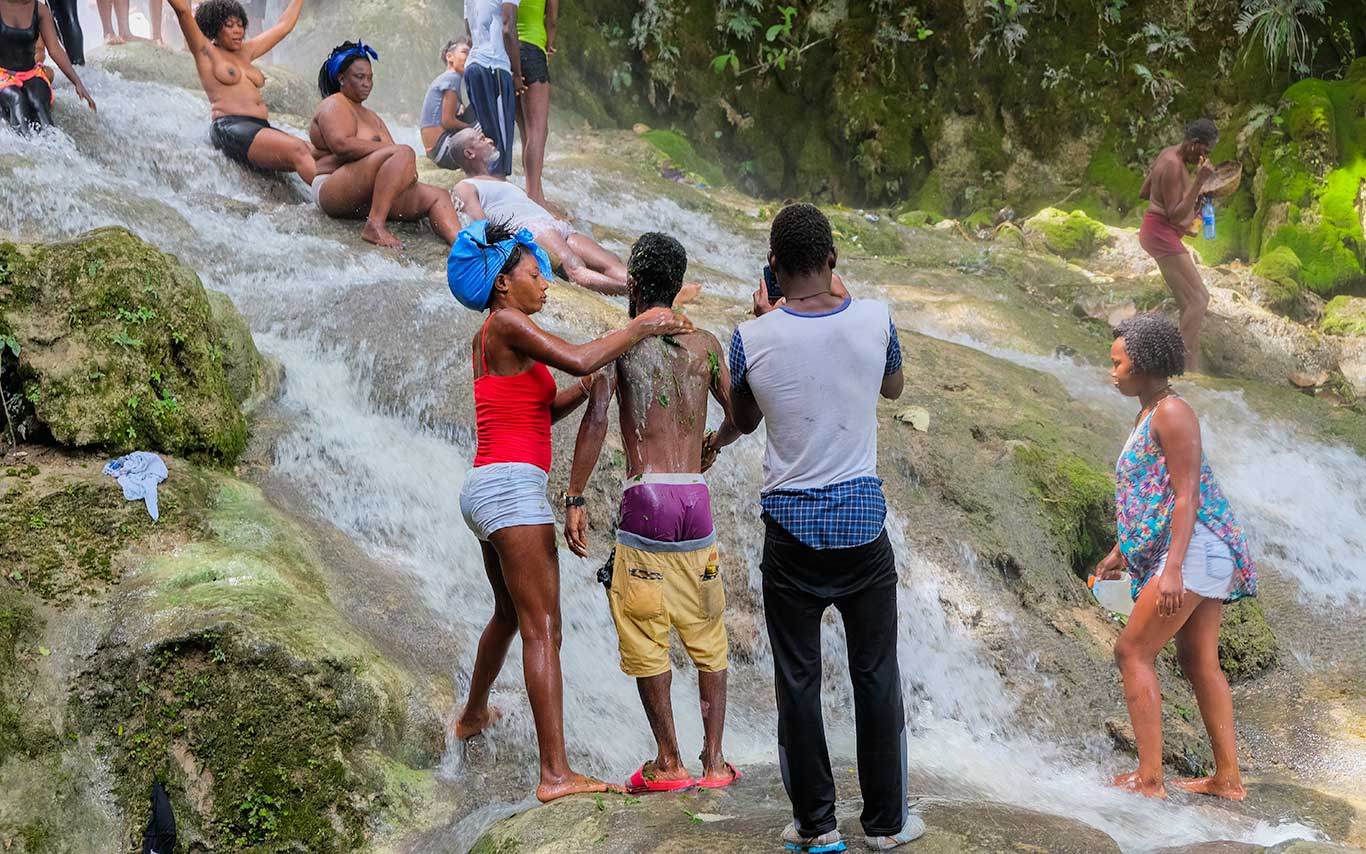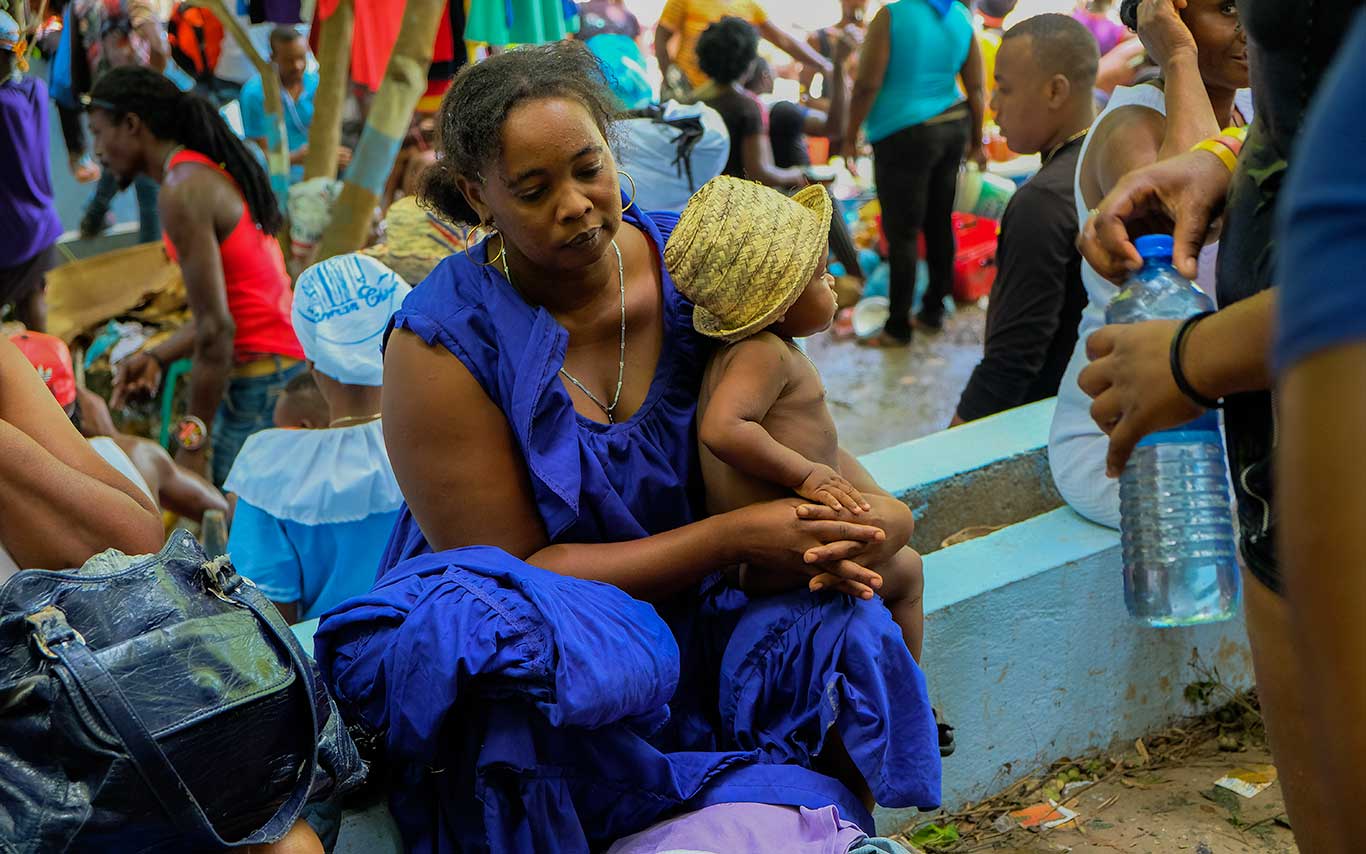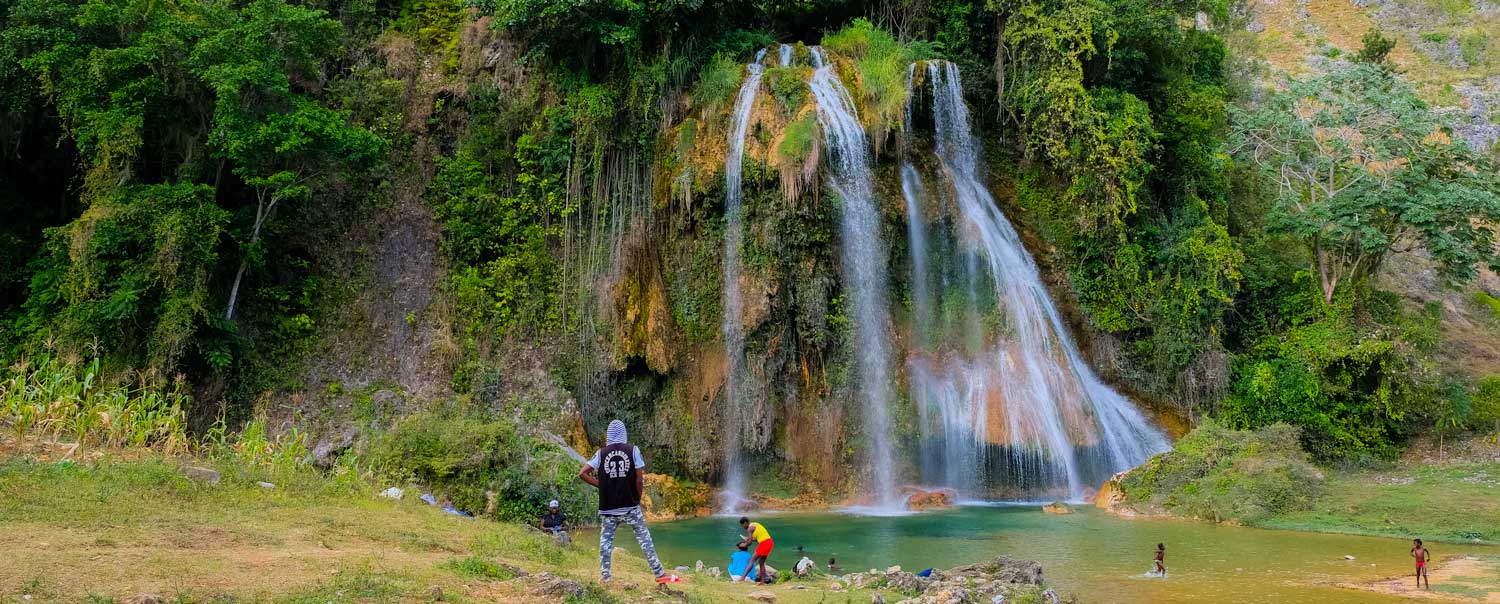
Photo: Franck Fontain
Seven of Haiti’s Prettiest Waterfalls
Unleash your inner adventurer and explore the hidden gems of Haiti – its stunning waterfalls!
Haitian landscape is a treasure trove of breathtaking and unforgettable wonders, and the waterfalls of Haiti are some of the most awe-inspiring and magical places you can visit. Imagine standing at the edge of one of these towering falls, feeling the thunderous roar of the water plunging down and the sprinkles on your face, and admiring the lush greenery and wildflowers surrounding you. It’s an intimate and exhilarating experience that will stay with you forever.
Haiti is blessed with an abundance of stunning waterfalls, each more beautiful and powerful than the last. From the misty heights of Bassin Bleu to the rainbow-drenched falls of Saut d’Eau, these natural sanctuaries offer a glimpse into the breathtaking beauty and majesty of Haiti’s wilds. Ready to explore these hidden gems and let yourself be enchanted and captivated by their raw and wild power?
Here’s a small selection of the most spectacular and awe-inspiring cascades in Haiti, just for you. So pack your bags, grab your camera, and prepare for an adventure of a lifetime. The beauty and magic of Haiti’s waterfalls await you!

Photo: Franck Fontain
1. Kaskad Pichon
One of the lesser-known waterfalls Kaskad Pichon is nestled in the lush green hills of Belle-Anse. This natural wonder is formed by three crystal clear pools that cascade down a rocky cliff into a misty paradise. As you follow the small path through the dense forest, you’ll be greeted by the soothing sound of the water and the fresh mountain air.
The first pool, Bassin Choukèt, is a serene and peaceful oasis where you can dip your toes and cool off. The second pool, Bassin Dieula, is a wild and turbulent spectacle where the water plunges down in a frothy white curtain. And lastly, the third pool, Bassin Marassa, is a magical and mystical place with rainbow colors dancing on the water’s surface.
Getting there
To reach Kaskad Pichon, you’ll need to embark on a thrilling adventure. The journey starts with a drive from Marigot to Belle-Anse, where you’ll switch to a motorcycle and navigate through rough roads and narrow trails. After a bumpy ride, you’ll reach the edge of the forest and start hiking through the jungle, following the sound of the falls.
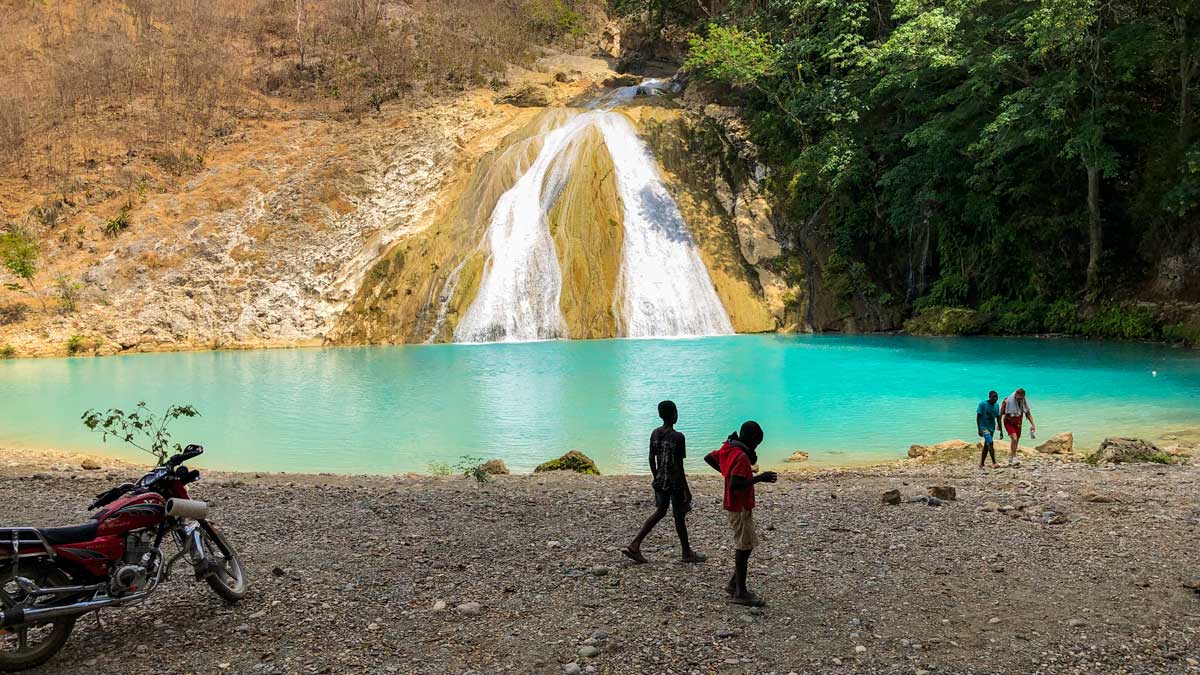
Photo: Anton Lau
2. Bassin Zim
Located in the dry hills of Hinche, Bassin Zim is a turquoise oasis that sparkles like diamonds in the sun. The waterfall itself is a majestic and graceful sight. Instead of plunging straight down, the water flows down the rocky cliff, creating a shimmering curtain that bathes the basin in a soft, ethereal light.
But the magic doesn’t stop there: just a short walk from the basin, you’ll find a hidden network of caves that will transport you to a different world. These natural cathedrals of stalactites and stalagmites are a breathtaking display of the power of nature. You’ll even see petroglyphs caved into the cave walls by the indigenous Taíno Indians.
Getting there
From Port-au-Prince, you’ll drive towards Hinche crossing the Samana river. From there, you’ll follow a rugged road through the dry hills and small villages. Once you’re there, you’ll only have to walk a few minutes from the parking area to reach Bassin Zim.
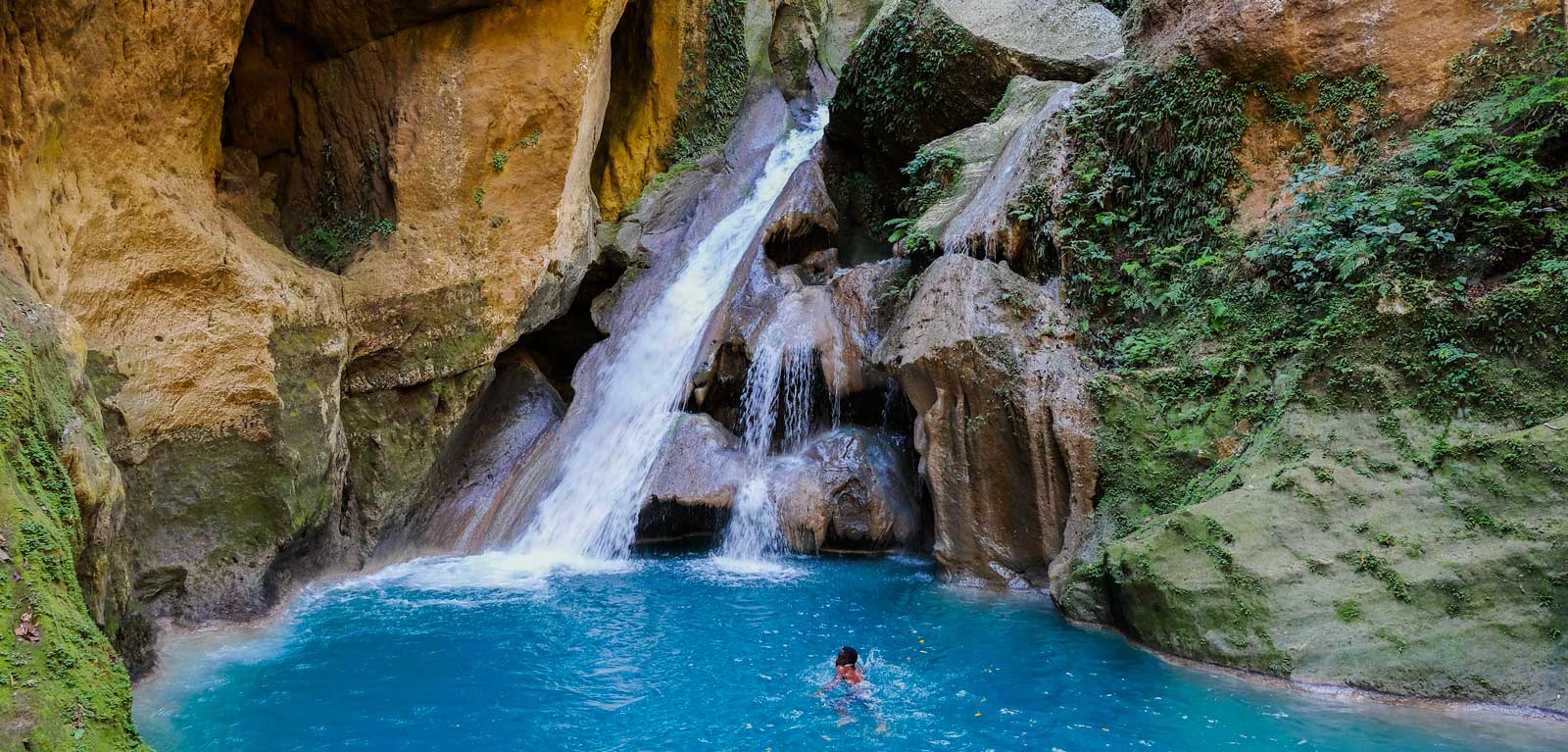
Photo: Franck Fontain
3. Bassin Bleu
One of the most famous waterfalls of Haiti, Bassin Bleu is a natural paradise that plays hard to get to. Hidden in the mountains just outside Jacmel, this hidden cascade is a series of four clear pools that flow down towards the Jacmel river.
The largest pool, Bassin Clair, is a spectacular sight (and also a bit tough to access). With a depth of over 20 meters and a waterfall that plunges down from a rocky cliff, this natural pool was made for adventure seekers. The other three pools, Bassin Doux, Bassin Froid, and Bassin Caché, are smaller and more intimate, but no less beautiful.
Getting there
To reach Bassin Bleu, departing from Jacmel, you’ll take a rough road through a riverbed and up the mountains towards La Vallée de Jacmel. Arriving at the entrance, you’ll have to hike the last stretch through a dense tropical forest. The journey is not easy, but the rewards are well worth it.
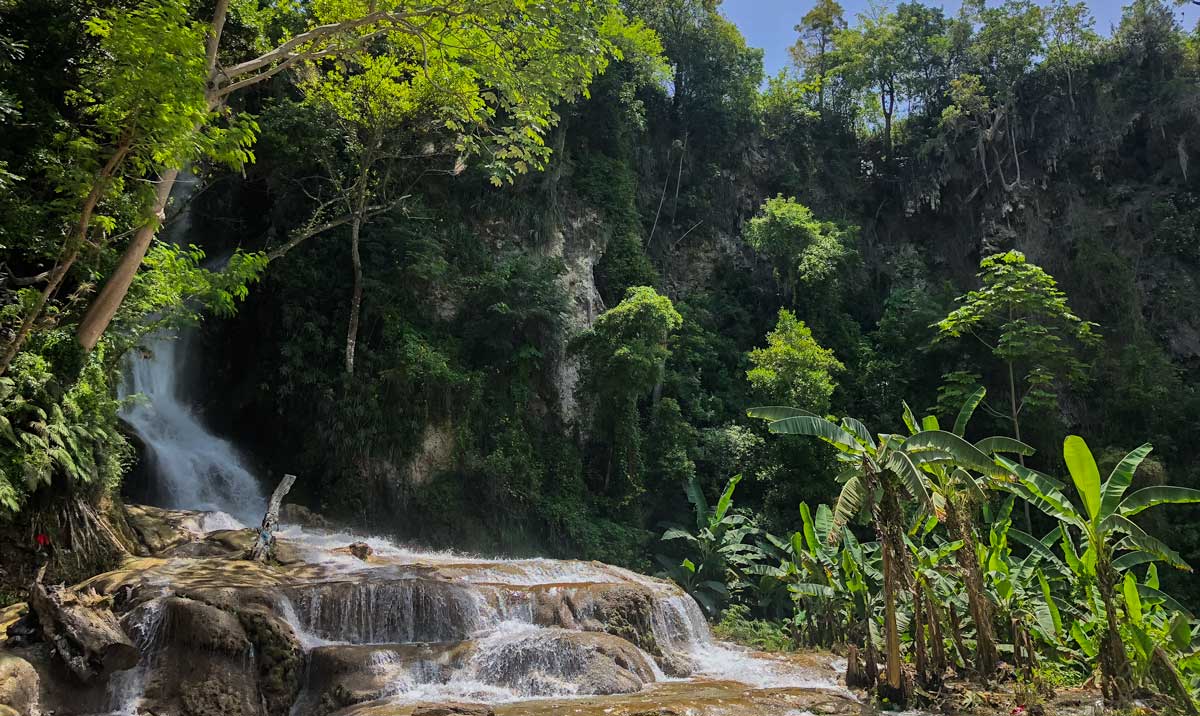
Photo: Anton Lau
4. Saut-d’eau
Saut-d’eau (or sodo in creole) is a large waterfall that cascades down a tall mountain. Despite the lack of a large pool at the base of the fall, the beauty of this place is undeniable. Every year in July, thousands of Vodou pilgrims visit the site for a dip in the supposedly healing waters, where legend says the Miraculous Virgin of Saut d’Eau once appeared.
The event, which takes place from July 14-16, is a week-long festival filled with music, food, and Vodou rituals. If you prefer to explore without the massive crowds it’s best to avoid visiting during these dates.
Getting there
To get to Saut-d’eau from Port-au-Prince, take the road to Mirebalais and then follow the signs to the municipality of the same name. The drive takes around two hours from Port-au-Prince.
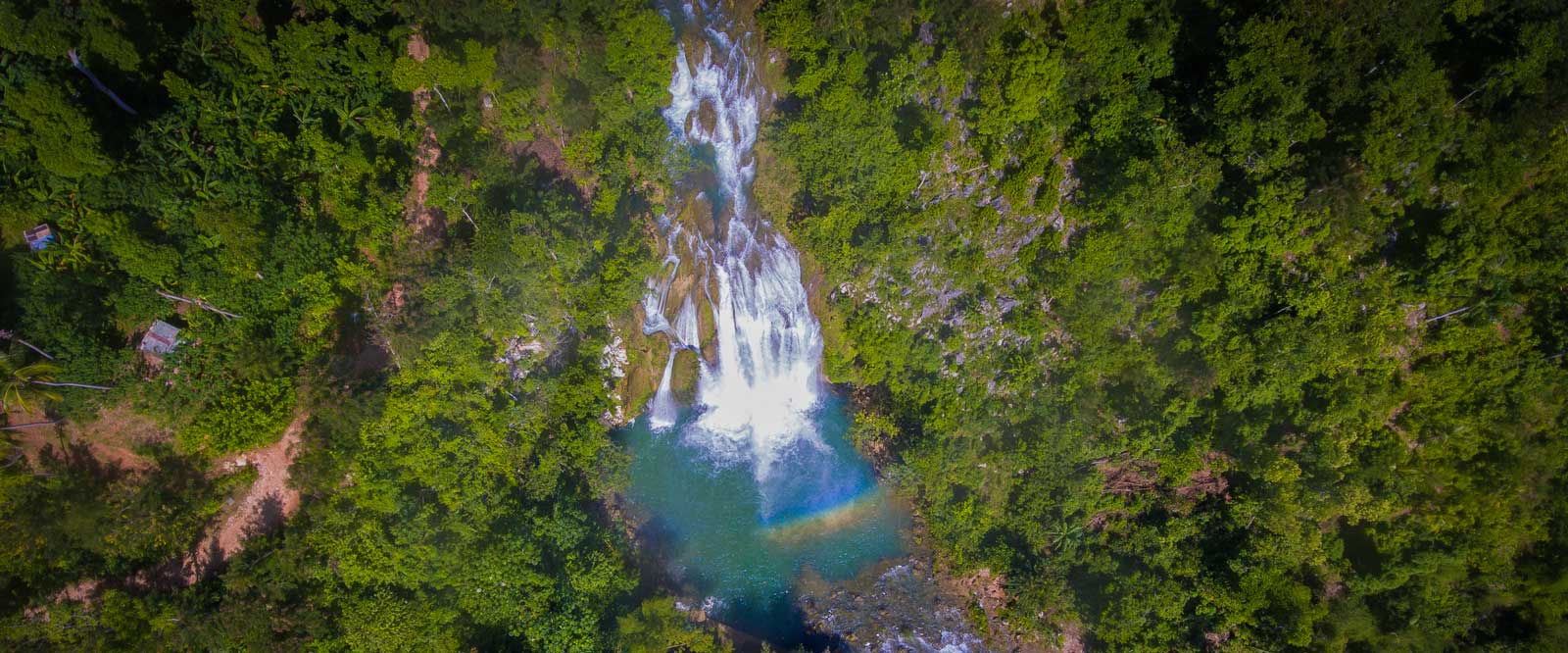
Photo: Ricardo Lartigue
5. Saut Mathurine
Located in the mountains of Camp Perrin in the South department, Saut Mathurine is the largest waterfall in Haiti. With a width of thirty meters, this majestic cascade forms a massive natural pool surrounded by lush vegetation. The water, which is fed by the Cavaillon river thunders over the edge of the cliff, plunging twenty-seven meters into a deep pool below. The force of the downrush creates a fine mist that hangs in the air, creating a mystical atmosphere.
Saut Mathurine not only provides a natural oasis for visitors but also plays a crucial role in the local community. The river’s powerful flow is harnessed to generate electricity that powers the town of Cavaillon and some of the surrounding villages.
Getting there
To reach the waterfall, you must embark on a journey to the quaint town of Camp-Perrin, located in the southern region. Once there, drive down road number 7 towards Marceline, and suddenly, you’ll find yourself in a picturesque waterworld.
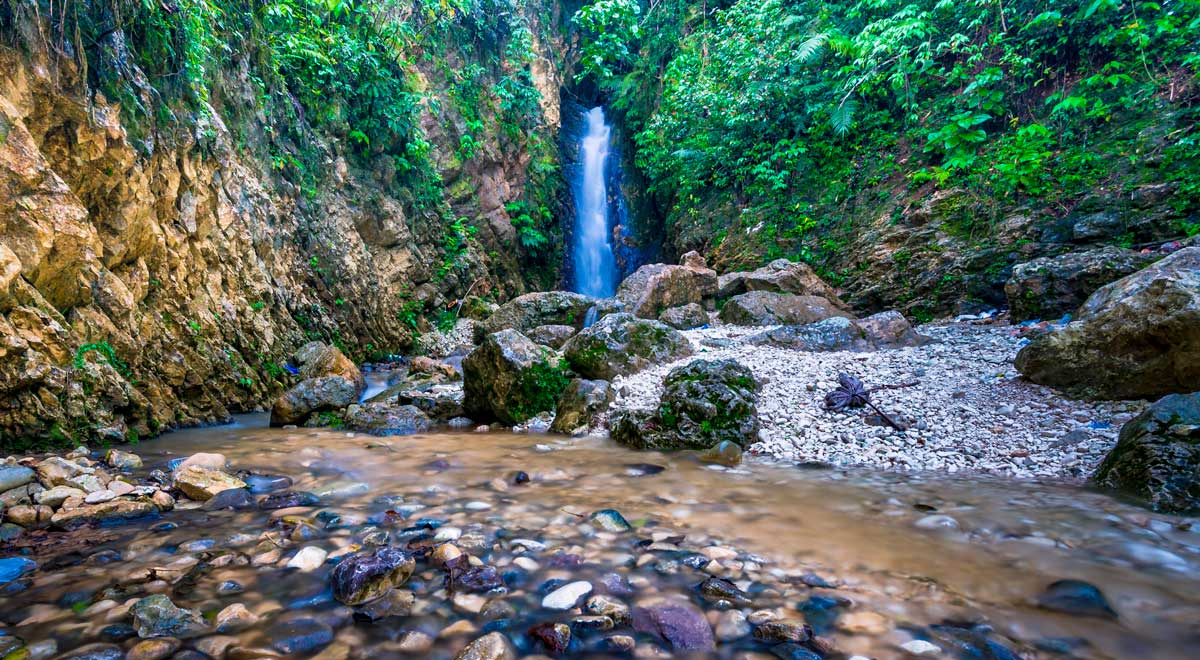
Photo: Verdy Verna
6. Kaskad Boukan
If you’re a mountain enthusiast, you’ll definitely want to make a hike to the stunning but lesser-known Kaskad Boukan. Nestled in the heights of Fermathe above Port-au-Prince, this is a smaller waterfall in the mountains with a refreshing atmosphere that will invigorate your senses.
Getting there
To get to Kaskad Boukan, you can either take a taxi or hop on a motorcycle from Pétion-Ville. When you reach the mountain pass in Fermathe, you’ll have to set out on a short hike as the waterfall is only accessible by foot. We recommend hiring a knowledgeable local guide.

Photo: Hervé Sabin
7. Bassin Waka
Looking for a thrilling day-trip from Cap-Haïtien? Look no further than Bassin Waka. A natural pool tucked away in a dense tropical forest near Port Margot in the north of Haiti. Here, you can marvel at the colors of the exotic fish swimming beneath the surface, creating a mesmerizing spectacle. The pool itself is a large expanse of turquoise brackish water, providing the perfect spot to relax and take a refreshing dip.
Getting there
Departing from Cap-Haïtien, you’ll drive towards the city of Limbe and then continue until reaching Port Margot. From here, you’ll need to embark on a hike through trails to the municipal section of Norvion. Located on the Morne Zombie mountain range, you’ll find Bassin Waka between the municipalities of Port Margot and Borgne.
Written by Costaguinov Baptiste.
Published December 2022.
Explore Haiti’s Wildlife & Nature

Paradise for your inbox
Your monthly ticket to Haiti awaits! Get first-hand travel tips, the latest news, and inspiring stories delivered straight to your inbox—no spam, just paradise.




